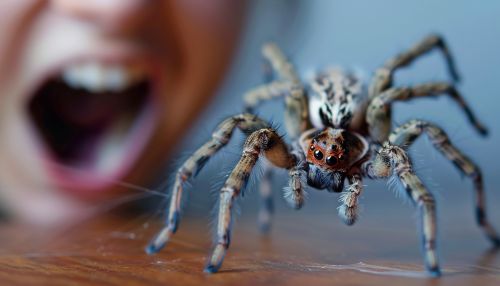Specific Phobias
Definition and Classification
A specific phobia is a type of anxiety disorder characterized by an excessive and irrational fear of a specific situation, living creature, place, or object. The fear is disproportionate to the actual danger posed by the feared object or situation. The term 'specific phobia' was first introduced in the third edition of the Diagnostic and Statistical Manual of Mental Disorders (DSM-III) by the American Psychiatric Association (APA).
Specific phobias are further classified into five subtypes: animal type, natural environment type, blood-injection-injury type, situational type, and other type. This classification is based on the nature of the fear-inducing stimulus.


Symptoms and Diagnosis
The primary symptom of a specific phobia is an immediate fear response upon exposure to the phobia-inducing stimulus. This fear response can manifest as a panic attack, which may include symptoms such as rapid heartbeat, shortness of breath, trembling, and an intense desire to escape the situation.
Diagnosis of specific phobias is typically based on a clinical interview, during which the individual's symptoms, history, and the impact of their fear on their daily functioning are assessed. The Diagnostic and Statistical Manual of Mental Disorders, Fifth Edition (DSM-5) provides specific criteria for the diagnosis of specific phobias.
Causes and Risk Factors
The exact causes of specific phobias are not fully understood, but they are believed to be a combination of genetic, neurobiological, and environmental factors. Some individuals may be genetically predisposed to developing specific phobias, while others may develop them as a result of traumatic experiences or learned behavior.
Risk factors for specific phobias include a family history of anxiety disorders, a history of traumatic experiences, and certain personality traits such as neuroticism and high harm avoidance.
Treatment
The primary treatment for specific phobias is cognitive-behavioral therapy (CBT). This form of therapy involves gradually exposing the individual to the feared object or situation in a controlled environment, with the aim of helping them to manage their fear response.
In addition to CBT, certain medications may also be used to manage the symptoms of specific phobias, particularly in cases where the individual also suffers from other mental health conditions such as depression or generalized anxiety disorder.
Epidemiology
Specific phobias are among the most common mental disorders, with a lifetime prevalence rate of approximately 12.5% in the general population. They are more common in women than in men, and typically first appear in childhood or adolescence.
Impact on Quality of Life
Despite being a common condition, specific phobias can have a significant impact on an individual's quality of life. They can lead to avoidance behaviors, which can limit the individual's activities and opportunities, and can also cause significant distress and impairment in social, occupational, or other important areas of functioning.
